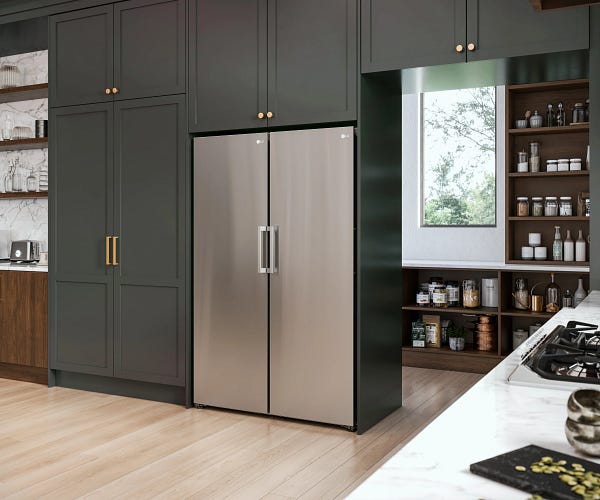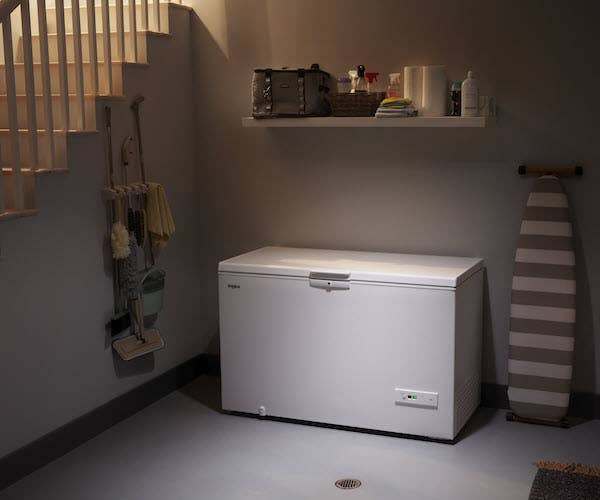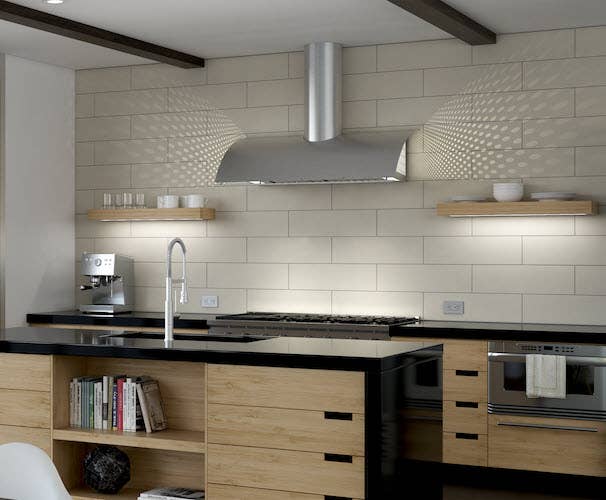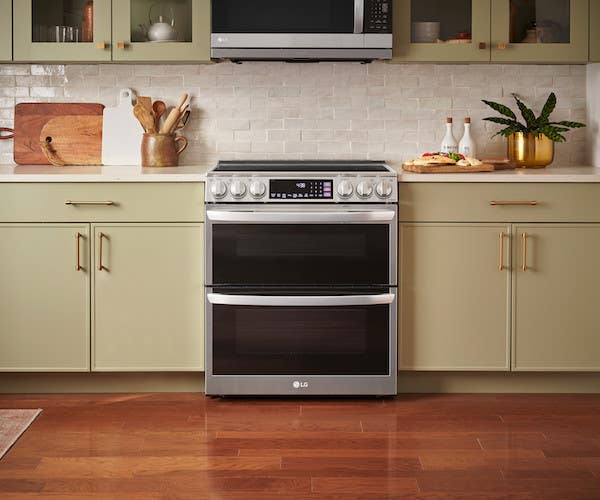Ventilation is a key consideration when planning for your kitchen. This buyers guide from KitchenAid will help make shopping easier.
A GUIDE TO VENTILATION: WHAT TO CONSIDER WHEN VENTILATION SHOPPING
Ventilation can help improve air quality in the kitchen and to keep your home smelling fresh and free from cooking odours. Ventiliation can also protect the cabinets, countertops and fabrics in your home by removing cooking by-products before they can cause any damage. This guide will walk you through a number of things to consider when shopping for ventilation products, and will also highlight the KitchenAid line-up.
NON-VENTED VS. VENTED
Vented
Vented Exhaust Most ventilation systems offer vented options as this is the most common configuration. These systems suction cooking by-products like smoke, steam and odours off the cooking surface before exhausting them to the exterior of the home.
Non-Vented
Non-Vented Recirculation* is perfect for kitchens where exhaust to the exterior of the home is not possible or where whole home circulation is present. Recirculating kits are designed to capture smoke, steam and odours produced by cooking. Once captured, they are filtered and then returned inside the home.
* where permissible by code. Canadian building codes include requirements for air quality such as ASHRAE 62 “Ventilation for Acceptable Indoor Air Quality". Consult local building code requirements prior to installation of ventilation equipment to determine applicable permits venting conditions and air exchange requirements. KitchenAid products are certified to HVI 915 and 916 in accordance with 9.32.3.10 of Canada's NBC'15.
DETERMINING VENTILATION POWER REQUIRED (CFM)*
Vent power is measured in cubic feet per minute (CFM). This determines the velocity that air flows into or out of the space. Often, a manufacturer’s CFM ratings include the certified ratings to HVI 916* Airflow Test Procedure or AHAM HRH-2-2019** Standards.
*Home Ventilation Institute (HVI)
**Association of Home Appliance Manufacturers
*Home Ventilation Institute (HVI)
When a ventilation product is HVI certified, it means that the air flow (CFM rate) and noise level (sones) have been tested to perform as stated under the rated conditions. If your vent has been HVI certified, you can visit the HVI website (www.hvi.org) to understand how it will perform based on your desired type of installation (duct configuration and some speed settings).
Association of Home Appliance Manufacturers
Si un produit de ventilation est certifié AHAM, cela signifie que le produit a été soumis à des vérifications impartiales du flux d’air (pi³/min) et du niveau de sonorité (sones) du fabricant dans plusieurs types d’environnements d’installation. Si vous êtes curieux de savoir si votre système a été certifié AHAM, vous pouvez visiter le site Web de certification du programme AHAM (www.aham.org) et consulter s’il a fait l’objet d’une vérification ainsi que les résultats*.
**Association of Home Appliance Manufacturers
If a ventilation product has been AHAM Verified then an impartial verification of the manufacturer’s air flow (CFM) and noise level (sones) under various installation environments has been performed. If you're curious as to whether your vent has been AHAM Verified or not, go to the AHAM Certification Program website (www.aham.org) to see if it underwent verification and to review the results.*
Choosing the Right CFM
It is important to select an appropriately sized ventilation unit with the right CFM level. If you go with a product with a too-low CFM rating, it may be unable to completely ventilate the air in your kitchen. Selecting a ventilation system with too high of a CFM level can create negative pressure meaning the air will have to be replenished via a different method. Also note that if the CFM is too high, air can be removed from places where you may not want it to be removed from.
When figuring out the minimum CFM requirements, give thought to several factors like what cooking techniques you use most often. Techniques like searing, blackening and frying may require a higher CFM rating to effectively refresh the air. Additionally, if you generally use 4 or more burners you may require a higher CFM rating to get the job done. Remember that the higher the CFM, the louder the hood will be. If simmering and sautéing are your preferred methods, or you often only use 2 burners, a lower CFM rating could suffice.
Gas Cooking Surface
If manufacturer does not make a BTU threshold public, then you can calculate the CFM required on your own. If you typically use all burners and enjoy high heat cooking, all you must do is divide total BTUs by 100 to find out the CFM required.


Induction & Radiant Cooking Surfaces
These surfaces produce far less heat than gas, therefore, their CFM rating should fall between 200 - 400 CFM. Keep in mind that this does depend on the number of burners and the power. A ventilation of the same width should accompany Radiant and Induction cooking surfaces.


SOUND LEVEL (SONES)
The sound level ratings for ventilation systems should be a key consideration to ensure the noise they produce doesn't disturb the rest of the household. Sound is measured in sones, which is one unit of noise as detected by someone with regular hearing. The lower the sones rating, the more quiet a ventilation product is. Kitchens with an open floor plan may want to consider ventilation products that operate on the quieter side. Sound requirements are included in Canada’s National Building Code.
KitchenAid products are tested, certified and labelled in accordance with HVI 915 Loudness Testing and Rating Procedure
Product CFM and sounds levels are verified in accordance with HVI 920 - 2015 through the AHAM Kitchen Range Hood Certification Program.* Some KitchenAid models offer noise reduction technology to provide additional sound insulation so that you can have conversations and cook at the same time.


SIZE AND CAPTURE AREA
Another critical factor to consider when purchasing a ventilation product is its capture area. A vent's capture area is the outermost perimeter of the hood bottom that suctions cooking by-products. The capture area must be sufficient based on the cooking appliance. The width of the capture area should be the same as the cooking appliance if not larger.
KitchenAid ventilation products are available in 24”, 30”, 36”, 42” and 48”.


TYPES OF CONFIGURATIONS
There are a number of different ventilation configurations, providing many options on how to integrate it into your kitchen design.
Wall Mount Ventilation:
These hoods are designed for a cooking surface to be positioned right against a wall. In this scenario, the hood is attached to the wall and air can be vented externally to the outside. If external venting isn't feasible, you can purchase a recirculating kit to allow air to be filtered and then returned into the kitchen.


Island Mount Ventilation
These are designed to be placed above an island and to seemingly "hover" right above the cooking surface ensuring that ventilation is where it needs to be. Air is removed through the ceiling and then deposited outside. If external venting isn't possible or desireable, a recirculating kit can be purchased and installed so that air can be filtered and then returned into the kitchen.


Under Cabinet Ventilation
These hoods are situated against the wall, right below the cabinet space and directly above the cooking surface. Customers can also look to purchase under cabinet ventilation that slides out over the cooking surface when in use. When not in use, it slides back in to provide a seamless look.


Microwave Hood Combinations (MHCs)
A great and efficient way to save valuable space as the microwave unit has a built-in ventilation system. They are securely installed against an overhead cabinet and a wall. They offer flexibility since they can be either recirculating or vented.
KitchenAid low profile MHC includes both a microwave and a hood in the undercabinet space that commonly features only a range hood, with a height of only 10.3". The benefit is that it frees up your counterspace for food preparation or other countertop appliances.


Telescoping Downdraft Ventilation
Achieve a streamlined appearance by installing this ventilation product behind the cooktop and in the counter. Via a button, the slim exhaust fan that resides in the counter will rise to capture smoke at the cooking surface or retract so that it's out of sight.


Custom Ventilation
This includes a vent system mounted on the inside of a custom cover. The cover can be comprised of either metal, wood, plaster or tile. If you choose to go the custom route, you will need a blower and hood liner.
There are two types of blowers to choose from:
In-line blowers are usually installed in an attic space.They use the same motor as one in an internal hood blower since noise is not a factor because they are located far from the kitchen.
Internal blowers are installed right above a cooking space. The blower is accessible making it easier to maintain than other options.
Hood liners are also available and some models offer overhead lighting to improve visibility and can trap grease.


Perimeter Venting
Perimeter venting works like a vacuum cleaner's crevice attachment. It accelerates air as it is sucked through the narrow slots around the ventilation hood’s perimetric cover. Next, it travels through grease filters in an effort to remove cooking by-products like grease from the air before it is exhausted from the kitchen.


Auto Speed Setting
An auto speed setting offers added convenience as it coordinates the ventilation with the heat generated from the cooking surface by automatically adjusting the speed of the blower motor.
Many KitchenAid ventilation products feature bright and long-lasting LED task lighting to increase the visibility of a cooking surface. Some models are equipped with a food warming lamp to keep food warm until it's ready to be served.


COLOUR & STYLE OPTIONS TO MATCH YOUR TASTES
Vent hoods come in either white, black, stainless steel and black stainless steel. Ventilation products are available in commercial-style or a more contemporary style. Custom hoods allow you the most design options for your kitchen; you can either choose to make a statement or match your cabinetry for an integrated look
Certain KitchenAid ventilation products feature PrintShield™stainless steel or black stainless steel to resist fingerprint smudges.
INSTALLATION
Give thought to your current vent duct size before making your purchase. Common sizes are either 3 ¼” x 10” rectangular and 6”, 7”, or 10” round. Many vent products are able to accommodate these sizes but the best idea is to always double check the guide to confirm. Installation heights can range between 24" and 36” depending on the model. Review the installation guide for all the pertinent information.
Also consult with the manufacturers guide to learn about the installation process and how it should be performed. Remember, if the ceilings are higher than 8ft, you may require a duct extension kit to make sure sufficient ducts are available to vent to the outside of the home. Kits that accompany vents are usually able to only accommodate 8ft ceilings.






